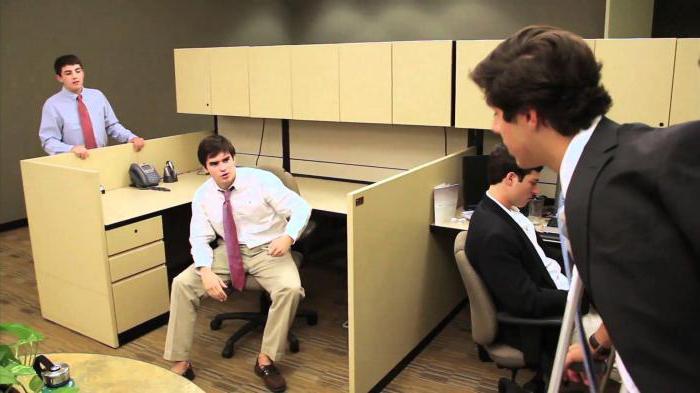Unemployment is a problem that is associated with the temporary inability to employ the entire population of an appropriate age. Its high level is one of the harbingers of recession in the economy. There are several types of unemployment. According to the International Labor Organization, about 6% of the world's population is in search of a job. This is more than 200 million people.

Frictional unemployment is a period when a person is looking for a new place to use his abilities. This is a temporary phenomenon, the features of which are determined by individual circumstances. Like natural unemployment friction is an integral part of the capitalist market economy.
Definitions
Frictional unemployment exists because the set of skills and abilities required for each individual position varies, as do the individual qualities of people seeking to receive them. This discrepancy is also associated with pay, the length of the working day, location, attitude and a whole set of other factors. Frictional unemployment affects not only people who were fired or left on their own, but also graduates of higher educational institutions and former housewives who decided to start building their careers.
Underlying reason
Employees, as well as employers, understand that we all do not live in an ideal world, therefore it is impossible to find a position that would fully correspond to their knowledge and skills. However, they are usually ready to spend a certain amount of their own time in order to find the most suitable. Frictional unemployment and its percentage show the duration of the search for a compromise between the requirements of employers and the desires of workers. In general, this benefits the economy because it leads to a more efficient allocation of resources. However, one must understand that too long a search and frequent inconsistencies will lead to losses, because part of the labor request will not be fulfilled. Therefore, the level of frictional unemployment should be controlled by the government.
Real practice
Three things interfere with full employment:
- Natural unemployment.
- Structural.
- Frictional.

The latter always exists in the economy. Its presence explains why full employment unattainable. In conditions of frictional unemployment, we are dealing with voluntary unemployment. People tend to wish for the best. The level of frictional unemployment is equal to the percentage of vacancies to the total number of posts. When demand exceeds supply, it will be small, since there are several employers for each worker.
Graphic image
Frictions on labor market Illustrated using a Beveridge curve. This graph displays the relationship between unemployment and the number of vacancies. It is named after the famous British economist William Beveridge. The curve has a negative slope, since a larger number of labor market offers means a decrease in unemployment. It can shift under the influence of the following factors:
- Changing the effectiveness of the employment system. Its improvement allows you to quickly find work. This causes the Beveridge curve to shift to the right.
- Change in the share of workers in the total working-age population.
- Other factors that can cause the curve to shift to the right or left.

In the long run, frictional unemployment turns into structural unemployment, the concept of which is largely close to it. Improvement market conditions labor leads to a shift of the Beveridge curve to the right, deterioration - to the left.
Frictional unemployment: examples
In real life, this type of temporary unemployment is often associated with the expectation of getting an effect from sectors of the national economy, in which the salary exceeds the equilibrium market. This leads to the fact that people are waiting for the opportunity to get a job with better conditions. But the problem is that it is quite difficult to calculate their number, because at that time they can be, for example, waiters or cashiers in supermarkets. Part-time employment is sometimes seen as a component of frictional unemployment.
Search theory
The buyer and seller can not always instantly find a trading partner. The period before the direct transaction is called the search time. The theory that describes this phenomenon is of great importance in microeconomics. When analyzing the labor market, it is used to study the level of frictional unemployment. In consumption theory, to rank customer decisions. The employee is looking for a position that will give him a large salary, the desired benefits or safe working conditions. From the point of view of the consumer, the best is a high-quality product that is sold at a fairly low price. In both cases, the acceptability of the job or product depends on the setting as to which alternatives are available on the market. Search theory studies the individual’s optimal strategy regarding a choice from a range of potential opportunities that differ in quality. It is built on the assumption that deferring a decision causes losses. So the period of job search is not paid. Search models are aimed at balancing losses and benefits from deferring decisions. In macroeconomics, theories of general equilibrium were developed on their basis.
Searching for Compliance
The formation of mutually beneficial relations has always worried mankind. Correspondence theory is especially important in labor economics. It was first developed by Dale Mortenson. In his book Theory of Equilibrium Unemployment, Christopher Pissarides first applied the theory of conformity to labor markets. In 2010, he, along with Peter Diamond, received the Nobel Prize for this. In the labor market, conformity theory describes the creation of new jobs. In 2012, Alvin Roth received the Nobel Prize for improving this theory. This proves its great importance for modern science. Search Theory illustrates individual solutions in microeconomics. But often the interaction of people is of much greater interest. Correspondence theory provides a way to model markets in which frictions interfere with instant regulation of the level of economic activity.
Unemployment benefits
The success of the development of the national economy depends on the efficient use of resources, including labor. In conditions of full employment, the level of frictional unemployment should be equal to zero, but this situation is possible only in theory. It is human nature to seek the best conditions, and not be content with what he has. Therefore, the state usually pays benefits to the unemployed. It can be small, covering only basic needs, or large, compensating for the time lost in search in proportion to the previous salary.
The first such system to protect the unemployed appeared in the UK in 1911. Its effect was limited to individual sectors of the economy that were subject to seasonal changes. After one week without work, a person could receive 7 shillings every seven days, but only 4 months a year. About 2.3 million people received benefits under this scheme.In 1920, the Unemployment Insurance Act appeared in Germany. This system extended to all but households, farmers, railways, and civil servants.

In most countries, unemployment insurance laws appeared after World War II. The largest allowance to date is paid in Switzerland.
Features of domestic assistance to the unemployed
In Russia, benefits are paid based on the Law on Employment. Its size is established by the government of the Russian Federation. The minimum unemployment benefit in 2015 amounted to 850 rubles, the maximum - 4900. According to the law, it is paid to citizens within 12 months, if before that they worked for 26 weeks. The amount of benefits depends on the period of search for a new position. In the first three months - 75% of earnings, in the next four - 60%, in the future - 45%. However, in any case, not lower than the minimum value in this area. In the second twelve-month period, only 850 rubles are paid. The same amount is due and first time job seekers.
Solution to the problem
Frictional unemployment, examples of which we meet at every step, is a phenomenon that must and can be fought. The ways to reduce its level include:
- Help in choosing a specialty, career guidance.
- Providing information on available vacancies and their requirements.
- Fighting prejudice against individual jobs and the people who perform them.
- Initiatives and regulation.
- Redistribution of industries.
- Improving infrastructure (increasing the number of kindergartens).
- Assistance in finding employment for persons of special categories.
- Reducing the difference between “clean” and “dirty” wages.
- Issuing work permits to foreigners.









